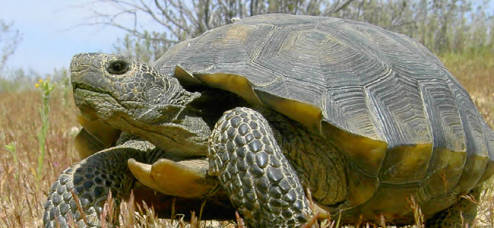 For decades, captive tortoises have suffered from a mysterious ailment known as “upper respiratory tract disease.” The disease was known in captive tortoises in Europe and the United States, according to information from the California Turtle and Tortoise Club.
For decades, captive tortoises have suffered from a mysterious ailment known as “upper respiratory tract disease.” The disease was known in captive tortoises in Europe and the United States, according to information from the California Turtle and Tortoise Club.
Then, in the 1980s wild desert tortoises in California suffered a major die-off from the disease.
The threat of spreading that disease to wild tortoise populations in Arizona is one of the many reasons why the Arizona Game and Fish Department does not allow the release into the wild of tortoises that have been handled for any length of time. The department cares for as many of the tortoises as it can, and also runs an adopt-a-tortoise program.
Last year the department cared for over 40 tortoises at one time.
“I can’t stress enough how detrimental it could be for both the captive and wild tortoises to release a captive tortoise in the wild,” Zen Mocarski, a department public information officer said in an AZGFD newsletter. “Along with potential disease issues and displacement, captive tortoises are not prepared to find food and water in an unfamiliar area and often die.”
Read the AZGFD newsletter item, here. (It is the third story from the bottom.)
Read the California Turtle and Tortoise Club’s upper respiratory tract disease fact sheet, here.
Photo: This desert tortoise is in Nevada. Courtesy US Fish and Wildlife Service.
